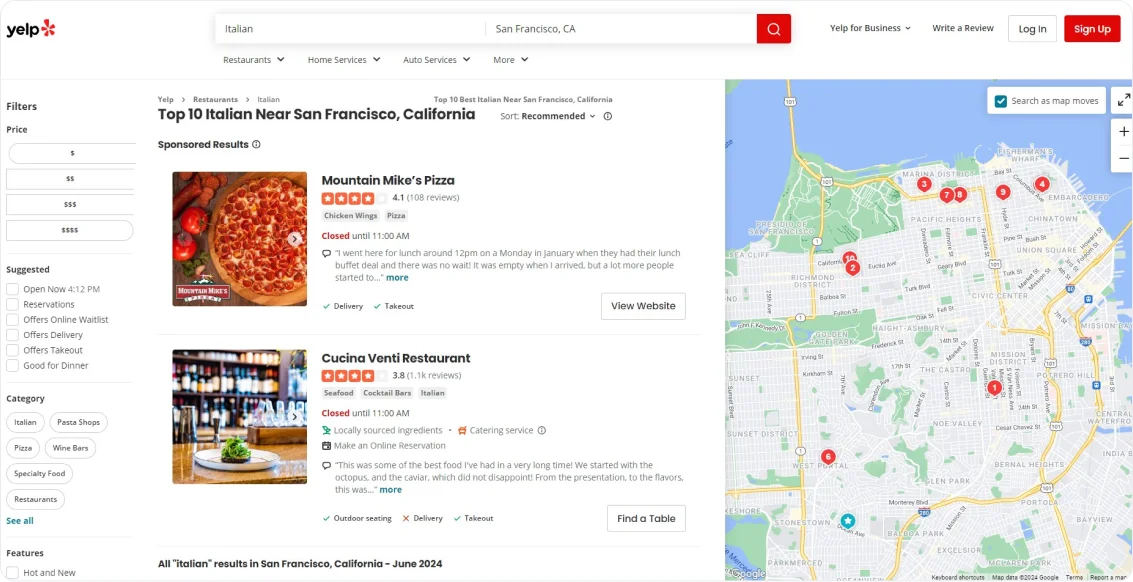Beginner's Guide to Search Engine Optimization (SEO)
The Search Engine Optimization (SEO) guide I've always wanted to write! It covers what matters most in a digestible format to help you get traffic from Google and other search engines.
Writing a post on Search Engine Optimization (SEO) has been on my mind for a while. After all, with billions of page views, Google offers a rich pool of traffic. Channelling this traffic to your own website has several unique benefits:
Free Targeted Traffic
Long-lived Content
No Format Restrictions
The challenge is that there are many levers you can pull — such as keyword optimization, backlink building, technical SEO, SERP analysis, and more. If you focus on the wrong things, you'll waste a lot of time.
Against this backdrop, the aim of this post is to give an overview of SEO and dive deep where it matters most so you know what to focus on to get traffic from Google and other search engines.
Three Ingredients of SEO
There are three things we need to do if we want to get traffic from our target audience on Google, they are:1
Understand search volume and intent
Fulfil the search intent with content
Appear high in the search results
We'll dive deeper into each of these steps below. If you already have a website, I recommend you start by adding it to Google Search Console and then following the guide from there.
Analyse Demand
The first step is to identify what our target audience is searching for in order to attract enough clicks. Then we need to understand why they are searching for it?The reason why people are searching for something is also known as search intent in SEO., so we can create content that aligns with what they expect to find.
Keyword Research
Keyword research helps us to understand what words and phrases people are searching for. There are plenty of paid tools but the best free tools for keyword research are:
If you're stuck finding relevant keywords, try to identify what your competitors are ranking for, typing something into Google's search bar to see the autocomplete suggestions, or using Google Trends.
But in general, you should have a vague idea what keywords you want to target. To prioritize keywords, you should start with the ones that:
- Have high search volume (i.e., demand)
- Have low competition, also known as low keyword difficulty
- Target your most likely-to-convert persona
- Reflect strong bottom of funnel action intent
Types of Search Intent
The page content needs to align to the search intent. When that is the case, the page attracts stronger signals like higher engagement, more backlinks, and longer page view time. Google rates this favorably which improves the chances of the page ranking higher in the search results.
In general, there are four main types of search intent:
| Type | Description | Example |
|---|---|---|
| Informational | Seeking more information on a topic | "What is SEO?" |
| Navigational | Looking for a specific website or page | "LinkedIn login" |
| Transactional | Make a purchase or take a commercial action | "Where can I buy an iPhone?" |
| Consideration | Comparing options before making a decision | "Best SEO tool" |
Often, the intent can be inferred from the search query. For example, "Best SEO tool" reflects consideration intent - someone is likely exploring options. So, if you're targeting this phrase, it's more effective to write a blog post comparing different tools rather than a standard product page because it's better aligned with the search intent.
Keyword Length
Long-tail keywords are search phrases that consist of three or more words. They often have lower search volume but higher conversion rates because they match user intent more closely.
Consider the following example:

Ranking for the keyword "tomato" is difficult for two reasons:2
- There's a lot of competition to rank for this keyword.
- It's hard to infer a clear intent from the keyword.
It's worth exploring long-tails keywords with less competition and a clear intent. For example, the phrase "how to make a cherry tomato salad" has a much lower search volume but you're more likely to rank higher due to its specificity.
Long-tail keywords are an excellent way to capture a larger piece of a smaller pie.
Create Content
At this point, you've identified the right keywords and understood the search intent, the next step is to deliver the right content.
Content Strategy
"Content is king" is a common saying in the SEO world because good content is the foundation of a successful SEO strategy. There are a few rules of thumb that can help create content that ranks high on Google:
-
Competitive analysis: Identify the top results for your target keyword and determine why those pages rank high. This provides a good benchmark against which you can compare your content and helps identify content gaps.
-
Lead with value: Start with the strongest insights or begin with an executive summary of the content. To hook the readers, make sure to front load the most valuable information.
-
Structure for Humans and Algorithms: Use a clear
<H1>to<H6>tag structure, sensible internal linking, and appropriate use of semantic keywords?Semantic keywords are keywords that are closely related to the content of the page..
Programmatic SEO
Programmatic SEO (pSEO) is the automated creation of high-quality pages at scale to target many related keywords.
A great case study for successful pSEO is Yelp, a user review site of restaurants, shops, and other businesses.

Yelp transforms it's database of businesses, reviews, and photos into thousands of high quality pages by:
-
Creating intent-matched URL structures that align with how users search (e.g.,
/best-italian-restaurants-chicagorather than generic/category-locationpatterns) -
Dynamically generating unique meta information that includes primary keywords, location signals, and trust factors like "Top-rated" or "Verified by 200+ reviewers"
-
Implementing schema markup that helps Google understand entity relationships between businesses, locations, ratings, and reviews
-
Producing differentiated content through user-generated reviews, photos, price information, and business attributes that create high-quality and unique pages
-
Building topical authority clusters around locations and categories with interlinked discovery pages ("Best Brunch Spots in Chicago," "Most Romantic Restaurants in Chicago")
Optimize Rank
The last ingredient to rank on Google is to optimize the on-page and off-page SEO of the website. On-page SEO refers to all the optimisations we can make on a website, whereas off-page SEO refers to actions taken outside of your website that can impact ranking.
On Page SEO Checklist
Indexing Optimization
-
Configure a robots.txt: Place a
robots.txtfile in the root directory of your website to control which pages search engines can crawl. Here's the one I use for my website:User-agent: * Disallow: /privacy Disallow: /imprint Sitemap: https://www.maxrohowsky.com/sitemap.xmlThis tells search engines to exclude the
/privacyand/imprintpages from being indexed. -
Submit an XML Sitemap: Upload a Sitemap, like the one on my website, to Google and Bing's Search Console to help engines discover and index all relevant pages.
-
Maintain canonical URLs: A canonical URL tells search engines which version of a page is the official one. Setting a canonical URL has two key benefits: First, it prevents duplicate content issues, such as when both
www.yourdomain.comandyourdomain.comserve the same content. Second, it consolidates SEO signals (like backlinks) to a single preferred URL ensuring your ranking power isn’t split across multiple versions of the same page. -
Use server-side rendering: Deliver complete HTML to search engines for more efficient crawling compared to client-side JavaScript rendering.
Site Structure & Content Optimization
-
Implement internal linking: Create strategic cross-links between pages to distribute link equity and help users navigate your content.
-
Optimize meta information: Craft compelling title tags and meta descriptions with target keywords to improve click-through rates from search results.3
-
Create descriptive URL structures: Format URLs with relevant keywords
example.com/category/topicinstead of parameter strings or IDs. -
Implement schema markup: Add structured data to help search engines understand your content and potentially earn rich snippets in search results.
Performance & User Experience
-
Optimize website performance: Use Lighthouse to measure and improve Core Web Vitals—aim for scores above 90 in all categories.
-
Secure with HTTPS: Install SSL certificate to encrypt data transmission as Google prefers HTTPS sites.
-
Deploy CDN services: Use a content delivery network (CDN) to serve assets from geographically closer servers, reducing global load times.
-
Ensure mobile responsiveness: Design for mobile-first experiences as most website traffic comes from mobile devices.
-
Optimize image SEO: Compress images, add descriptive alt text, and implement lazy loading to improve page speed and accessibility.
Off Page SEO Checklist
-
Develop quality backlinks: Cultivate relationships with relevant websites to earn authoritative dofollow links pointing to your content.
-
Establish brand: Generate regular brand mentions across the web, even unlinked ones, to strengthen brand recognition and authority.
Footnotes
-
This post focuses on Google because it dominates online search with a 90% market share. However, Bing has been gaining traction by growing from a market share of 6% to 12% between 2020 and 2025. ↩
-
While writing this, I checked what page ranks first for "tomato", it's this Wikipedia page. It seems that most users searching for "tomato" express information intent. ↩
-
Google will sometimes (not always!) use the
meta name="description"tag from a page to generate a snippet in search results. ↩
